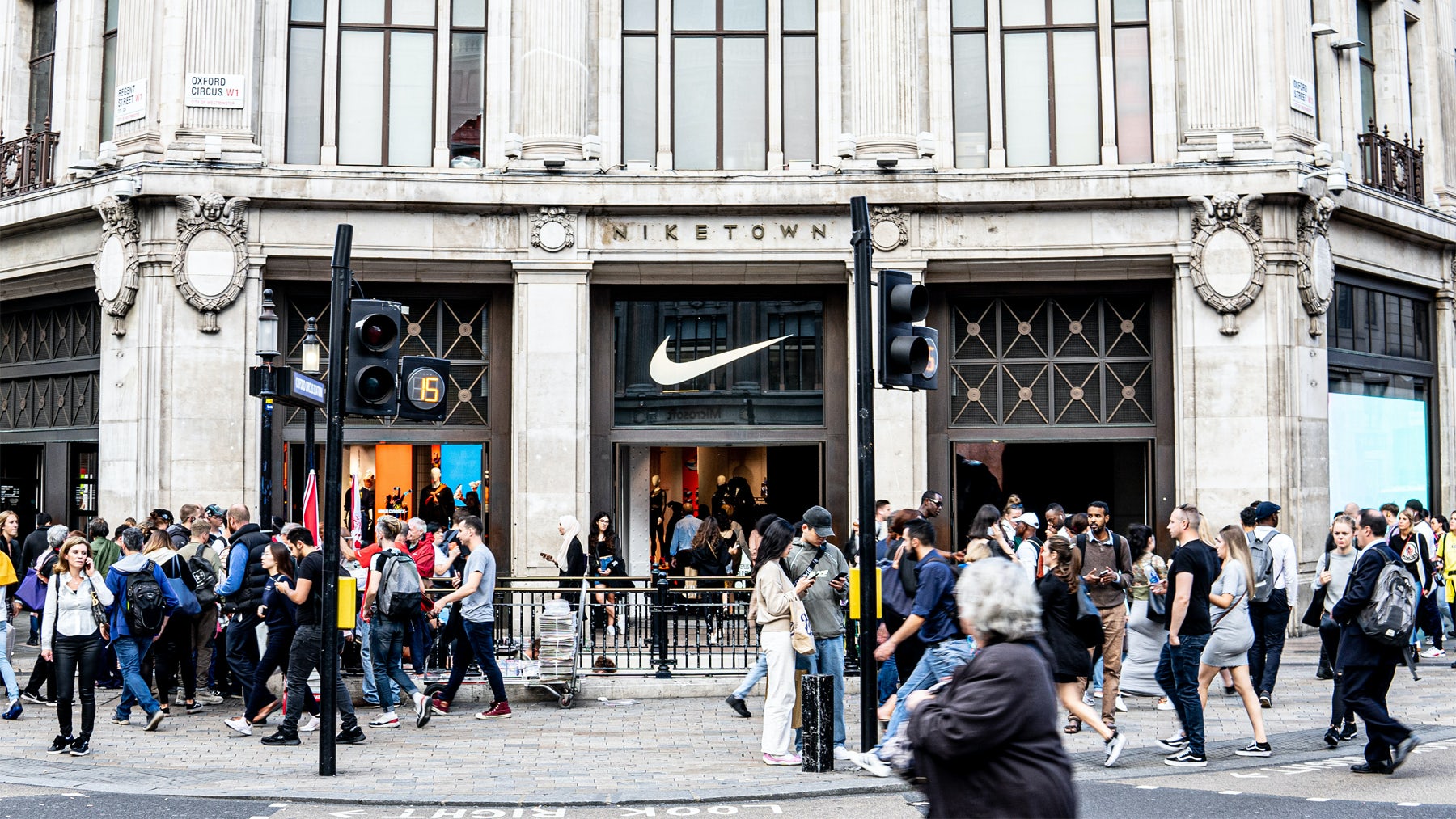The sportswear and clothing manufacturing giant has wormed its way into almost every aspect of daily life, and the film industry is no exception.

In Naomi Klein’s highly successful and acclaimed 1999 book No Logo, the author takes aim at Nike as a greedy, inhuman mega brand. Much of the book is dedicated to dissecting and criticising the sportswear companies’ labour practices, global expansion as a brand and deceptive, widespread marketing of their athletic concept and signature swoosh. Klein’s analysis, as brilliantly written as it is terrifying in content, was so scathing as to garner a point-by-point response from Nike, in which they tried to defend themselves as a brand and a manufacturer.
It speaks to the books high regard and informative content that it was so offensive as to illicit a response from a multi-billion dollar global industry. However, the written response was not good enough for many, and though Klein’s criticism may have been too biting for some, there is no doubt amongst the broader public that Nike, as a brand, often go too far.
Everywhere you look now, whether at the feet of the masses on public transport or a billboard towering over a busy city road, the swoosh, the ‘Just Do It’ slogan and some sort of new activewear is ever present. There are massive Niketown stores where nothing exists without some sort of branding. The biggest athletes in the world are sponsored by the brand and promote their clothing and their spiritual sporting attitude. Many Nike employees tattoo themselves with the signature swoosh, and children around the world recognise the logo as they do the golden arches of McDonalds.

As much as they push their brand through physical advertising, television commercials and endorsed superstar athlete campaigns, Nike has never fully funded or promoted their own feature film. They often release shorts on sport and skateboarding, but have never released a major film in cinemas, which, though it might seem normal for an athletic wear brand, is surprising considering the undoubtable and drastic global influence Nike has. This does not mean, however, that the mega brand haven’t done their best to infiltrate the industry with strategic product placement. Though this is a practice done by many brands, especially today considering the nature of streaming services and their lack of advertisement, Nike have been particularly successful in promoting their shoes through thinly veiling promotion as plot.
Nike’s full frontal assault on cinema began in earnest during the 1980’s and still continues today. 1989’s sequel to the renowned film, Back To The Future 2, sees Marty McFly don a pair of self-lacing shoes that glow a neon green ‘Nike’ when tied up. Named the Nike MAG (Magnetic Anti Gravity), fans dubbed a Nike shoe made years later as the ‘Air McFly’ due to its aesthetic similarity. Nike even filed a patent for self-lacing shoes and had staff working on the idea, which was eventually released to the public in a limited run in 2016. Not only did Back To The Future brand Nike as the shoes worn in the future, but it gathered excitement around the brand and gave them the opportunity to release a whole new, highly anticipated sneaker.
In the same year, Spike Lee released his highly controversial and critically acclaimed film Do The Right Thing. In the film, the character of Buggin’ Out becomes offended when a man accidentally steps on his sneakers, the popular Nike series called Air Jordans. His friends encourage him to fight the man considering the price of the sneaker and the fact the scuff has ‘ruined’ them. This is fitting with the rest of the film which analyses rising tensions in an American suburb between races and among those in poverty.
Perhaps the most outrageous moment of Nike’s product placement campaign came in 2002 with the children’s comedy film Like Mike. An orphan, played by rapper Lil’ Bow Wow, finds a pair of white Nike Blazers in a donation box and believes the shoes used to be owned by Michael Jordan. He subsequently gains incredible basketball skills and signs a contract with the Los Angeles Knights, a fictitious team. Not only does this story imply that Nike shoes promote special athletic capabilities and powers, but it ties in the plot with Michael Jordan, arguably one of the most heavily branded sport stars of all time, and one of the most important spokespeople for Nike. This promotion of Nike not only as a brand but as a performance enhancement is also seen in 1997’s George Of The Jungle, when George dons a pair of Nike Air’s and is suddenly as fast as the wind.
Nike is dotted throughout classic and lesser known films, both in passing and as a focal point. In the most famous scene from classic film Forrest Gump, Forrest sprints around America in a pair of Nike Cortez’s. In 2013’s White House Down, Jamie Foxx tells a terrorist to ‘get your hands off my Jordan’s.’
It would be reasonable to say that some of Nike’s cinematic presence is merely due to them being a large part of modern culture, and modern culture being reflected in film. But due to the background of the brand, their aggressive marketing campaign which at time seems like a desire for international domination, and their presence in million upon millions of advertisements, poster, songs, billboards, sporting events and stadiums around the world, it would be fair to say that Nike has infiltrated the cinematic world just as it has the rest of contemporary living. Naomi Klein writes that Nike branded themselves as ‘transcendence through sports’ and this is definitely what they try to tell us by bombarding our favourite movies with that ever-present swoosh.
Subscribe to FIB’s Weekly Alchemy Report for your weekly dose of music, fashion and pop culture news!







